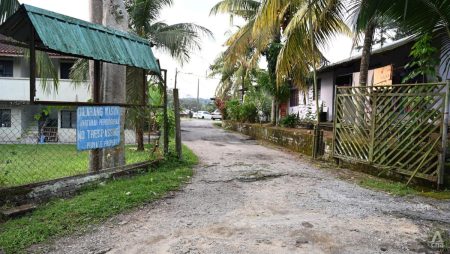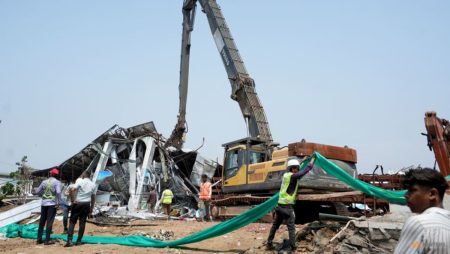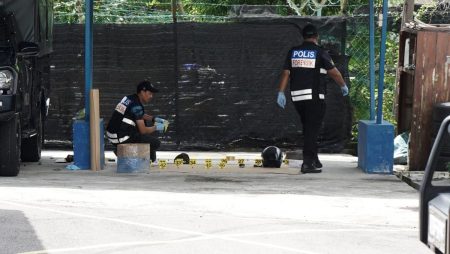Every year on Good Friday, Catholic devotees in the Philippines re-enact the crucifixion of Jesus Christ in a village in Pampanga province called San Pedro Cutud. This event attracts around 20,000 visitors, both locals and foreigners, who come to witness this display of devotion. The Roman Catholic Church in the Philippines does not condone the practice of crucifixion as a form of devotion.
The re-enactment involves actors dressed as Roman soldiers whipping devotees as they carry crosses and then nailing them to those crosses. One of the most notable participants is Ruben Enaje, who has been crucified for the 35th time. Enaje, now 63 years old, reflects on how Jesus must have felt carrying his cross and being crucified as he participates in the ritual. He acknowledges that as his body ages, he may not be able to continue with this practice for much longer.
In addition to Ruben Enaje, seven more Filipinos were nailed to crosses in other villages in Pampanga as part of the Good Friday ritual. This extreme display of faith is just one of the ways in which Filipinos express their religious beliefs during Holy Week. The Philippines is a predominantly Catholic country, with over 80 percent of its population identifying as Roman Catholic.
The crucifixions and other acts of self-flagellation during Holy Week are believed by devotees to cleanse them of sin, cure illness, and bring about blessings. However, the Catholic Church disapproves of such extreme practices, stating that prayer and sincere repentance are sufficient forms of observance during Lent. Despite this disapproval, many Filipino Catholics continue to take part in these rituals as a way of expressing their faith and devotion.
The re-enactment of the crucifixion in Cutud, Philippines, serves as a stark reminder of the suffering endured by Jesus Christ on the cross. For those who participate, it is a way of connecting with the pain and sacrifice of Jesus and expressing their gratitude for his sacrifice. While controversial and not officially sanctioned by the church, the practice continues to draw large crowds and spark debate about the boundaries of faith and devotion.
As the tradition of crucifixion re-enactments in the Philippines continues each year, it raises questions about the intersection of faith, culture, and personal belief. While some see it as a powerful expression of devotion, others view it as a form of religious extremism. Ultimately, the crucifixion rituals in Cutud and other villages in Pampanga are a testament to the deep religious faith and traditions that shape the lives of many Filipinos during Holy Week.













